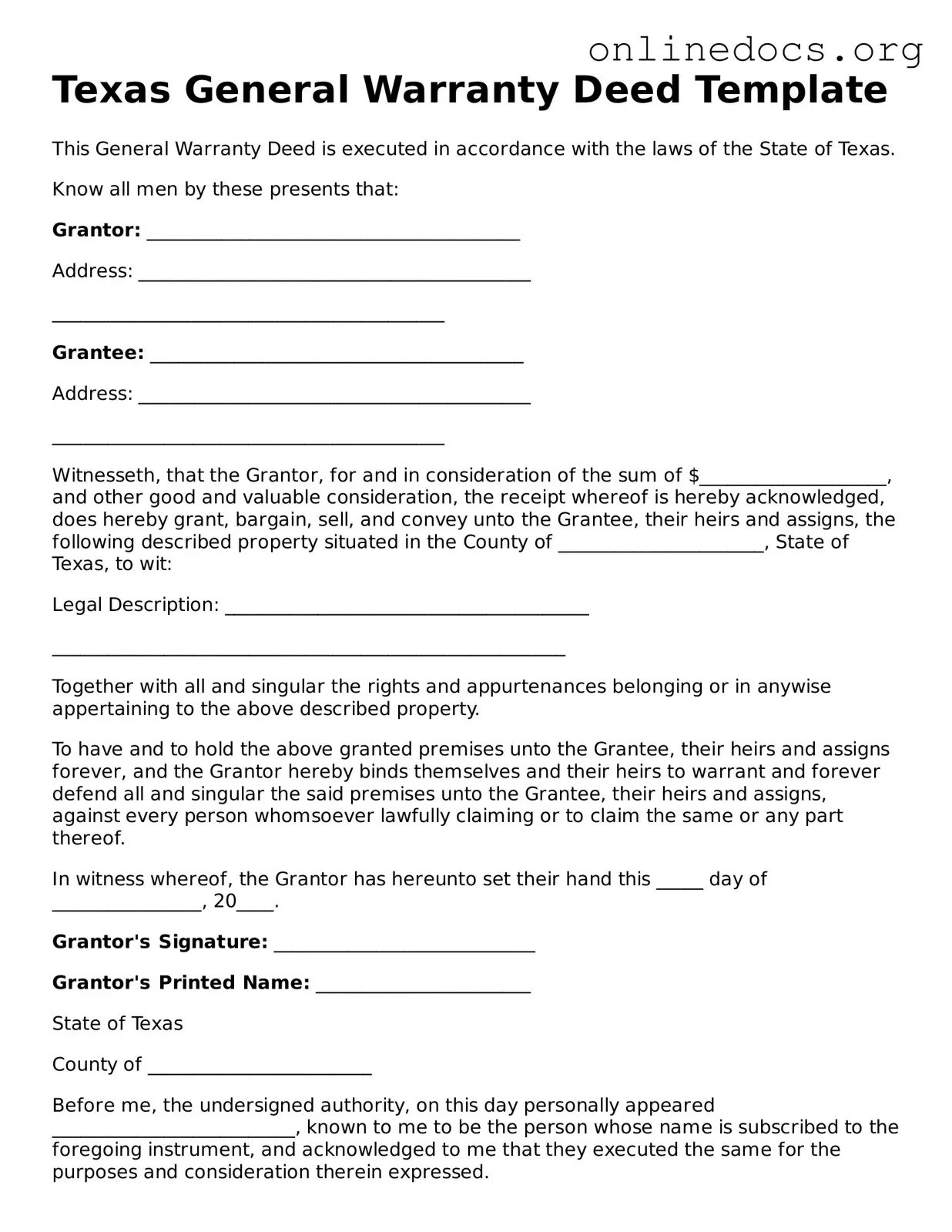The Texas Deed form is similar to a Warranty Deed. A Warranty Deed provides a guarantee that the seller has clear title to the property and the right to sell it. It assures the buyer that there are no hidden claims against the property. This form protects the buyer by ensuring that if any issues arise regarding ownership, the seller will be responsible for resolving them.
Another document that resembles the Texas Deed is the Quitclaim Deed. A Quitclaim Deed transfers whatever interest the seller has in a property without making any guarantees about the title. This means that if the seller has no ownership rights, the buyer receives nothing. While it is simpler and quicker to execute, it offers less protection to the buyer compared to a Warranty Deed.
The New York Trailer Bill of Sale form is essential for those looking to transfer ownership of a trailer, much like other property-related documents. This form facilitates a clear and legal exchange between the seller and the buyer, ensuring that both parties are protected under state law. For more information about the specifics of creating this document, visit legalformspdf.com, which provides valuable resources and templates.
The Special Warranty Deed is also similar to the Texas Deed. This document provides a limited warranty, ensuring that the seller has not encumbered the property during their ownership. Unlike a full Warranty Deed, it does not cover issues that may have existed before the seller acquired the property. This form strikes a balance between the buyer’s need for protection and the seller’s desire for a simpler transaction.
A Bargain and Sale Deed is another comparable document. This deed implies that the seller has title to the property but does not guarantee against any liens or claims. It often includes language that indicates the property is sold “as-is.” Buyers should be cautious, as this type of deed does not offer the same level of protection as a Warranty Deed.
The Grant Deed is also similar to the Texas Deed. It conveys ownership and includes an assurance that the property has not been sold to anyone else. However, it does not guarantee the absence of liens. This document is commonly used in some states and offers a middle ground between a Warranty Deed and a Quitclaim Deed.
A Deed of Trust shares similarities with the Texas Deed but serves a different purpose. It is used to secure a loan by placing a lien on the property. In this case, the borrower conveys the property to a trustee, who holds it as security for the loan. This document outlines the terms of the loan and the rights of the parties involved.
The Affidavit of Title is another document that complements the Texas Deed. It is a sworn statement by the seller confirming their ownership and the absence of any claims or liens against the property. While it does not transfer ownership, it serves as a declaration that can accompany a deed to provide additional assurance to the buyer.
A Leasehold Deed is also relevant. This document grants a tenant the right to use a property for a specified period. While it does not transfer ownership, it provides a legal framework for the tenant’s rights and responsibilities. This type of deed can be important in real estate transactions where leasing is involved.
The Bill of Sale is similar in that it transfers ownership, but it typically applies to personal property rather than real estate. It serves as proof of the sale and outlines the terms of the transaction. While it does not convey real property, it shares the fundamental purpose of transferring ownership from one party to another.
Finally, the Certificate of Title is akin to the Texas Deed in that it provides evidence of ownership. However, it is often issued by a title company after a title search. This document confirms that the seller has the right to sell the property and that there are no outstanding claims. It plays a crucial role in ensuring a smooth transaction and protecting the buyer’s interests.
